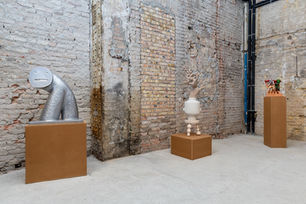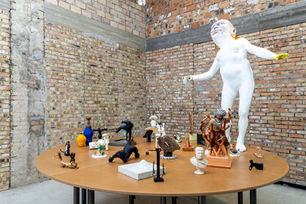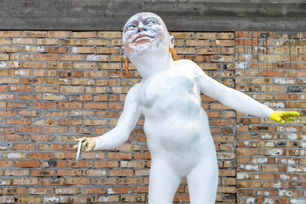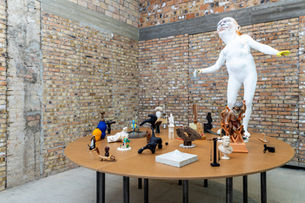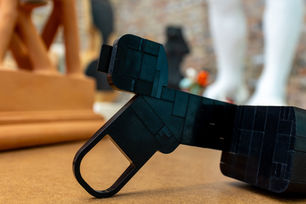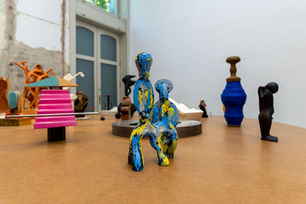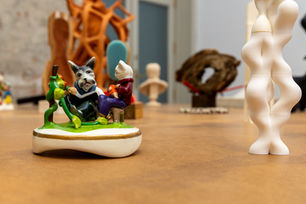
BAGUDA - Perpill
Einspach & Czapolai Fine Art is pleased to present the exhibition Perpill by the artist collective BAGUDA.
Formed in 2021, the BAGUDA association is a collaboration of ten sculptors. The group took its name from a little-known, remote village in India—a place that, while geographically real, gains metaphorical significance in this context. This barely marked location on the map becomes a reflection of the artists’ own positions within the field of contemporary sculpture: loosely connected yet individually autonomous.
BAGUDA's exhibitions are not based on predefined curatorial concepts. Each member contributes new works to each show—works that respond to current questions, material experiments, and formal investigations. Collaborative thinking and continuous dialogue play a central role in the exhibition-making process: documentation of the works is shared during the planning phase, and installation unfolds as a collective effort. The emphasis is not on aesthetic unity, but on polyphony.
What unites the members of BAGUDA is not a common stylistic direction, but rather a profound and critical engagement with classical sculpture. In their works, sculptural forms, historical references, and material presence emerge not as imitation, but as reinterpreted references. Relief and volume, void and mass, density and translucency all function as bearers of specific meaning, charged with sculptural tension.
BAGUDA represents a unique formation in contemporary Hungarian sculpture, grounded in both collective cooperation and individual artistic presence. Their practice is defined by a productive tension between experimentation and commitment to tradition. These dual impulses intertwine into a rich network of formal and conceptual reflections. Their sculptural forms and historic allusions never merely quote the past, but engage with it anew, reactivating it in the present.
The dramaturgy of the exhibition is built on two distinct spatial units. In the larger gallery space, a monumental round table serves as a site of shared thinking: each artist has placed a single object upon it, rendering visible the delicate balance between collective presence and individual authorship. In the smaller room, wall-mounted and mid-sized sculptural objects are presented. The spatial arrangement also underscores the performative dimensions of sculpture—movement between objects, material proximity, and the body's relation to sculptural presence all combine to form a spatial narrative.
The title of the exhibition—Perpill—is a shortened form of the Hungarian phrase per pillanat ("at the moment"). It humorously points to the present state of the participating artists: what questions, materials, or formal approaches they are currently immersed in. The abbreviation, and the slight semantic shift it entails, also distances the phrase from its original meaning—sounding more like a product or brand name. As such, it may be read as an ironic reflection on the positioning of contemporary artistic practices within cultural and market dynamics.
//Mónika Zsikla//





